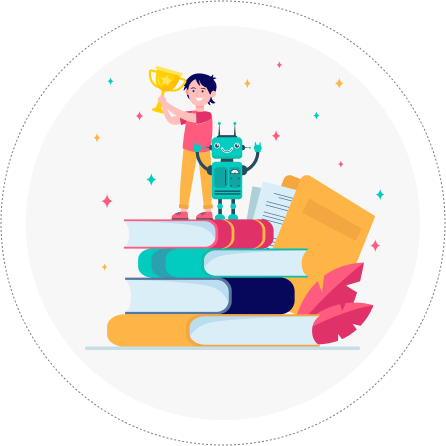Computer Application Class 9
- Home
- / Python Handay
- / Computer Application Class 9
Welcome!
The Computer Applications course for Class 9 includes a 50-mark theory paper and a 50-mark practical exam. The theory paper covers topics such as the Basics of Information Technology , Cyber-Safety , and Office Tools . The practical exam assesses students’ skills in using word processors, spreadsheets, and presentations effectively.
Prerequisites
The prerequisites for learning Computer Applications in Class 9 include a basic understanding of computers, familiarity with operating a computer system , and fundamental knowledge of file management. An interest in technology and a willingness to learn new software tools is also beneficial.
Learning Objectives
The learning objectives of Computer Applications for Class 9 are to develop students’ foundational skills in information technology, including understanding computer systems, safe internet practices, and proficiency in office tools. Students will learn to create and manage digital documents, presentations, spreadsheets, and become aware of cyber-safety measures.
Course Overview
- Computer Systems
- Characteristics of a computer
- Components of a computer system: CPU, memory, storage devices, and I/O devices
- Memory
- Primary memory: RAM, ROM
- Secondary memory
- Storage Devices
- Hard disk, CD ROM, DVD, Pen/Flash Drive, Memory Stick
- I/O Devices
- Input devices: Keyboard, Mouse, Scanner, Web Camera
- Output devices: Monitor, Printer
- Types of Software
- System Software: Operating Systems, Device Drivers
- Application Software: Word processors, spreadsheets, presentation tools, mobile applications
- Computer Networking
- Types of Networks: PAN, LAN, MAN, WAN
- Wired and wireless communication: Wi-Fi, Bluetooth, Cloud Computing (Private/Public)
- Multimedia
- Understanding multimedia: Images, audio, video, and animation
- Safe Browsing
- Identity protection
- Password usage and privacy
- Confidentiality of information
- Cyberstalking, reporting cybercrimes
- Malware
- Viruses, adware
- Word Processor
- Creating and saving documents
- Editing and formatting text: Text style (B, I, U), font type, size, color, alignment, paragraph formatting
- Additional features: Headers, footers, page numbering, grammar/spell check, subscript/superscript, symbols
- Printing and print preview
- Insertions in Documents
- Inserting pictures
- Bullets and numbering, borders, shading
- Working with tables: Insert/delete rows/columns, merging/splitting cells
- Auto-format, track changes, review comments, drawing tools
- Presentation Tools
- Creating presentations: Slides, layouts, saving
- Editing and formatting slides: Titles, text, background, watermark, headers, footers, slide numbers
- Inserting pictures, animations, sound effects, rehearsing timings
- Spreadsheets
- Concept of a worksheet and workbook
- Creating, saving, editing worksheets
- Formatting text, inserting/deleting rows/columns, using formulas
- Using statistical functions: SUM(), AVERAGE(), MAX(), MIN(), IF()
- Creating and embedding charts: Line, pie, scatter, bar, area
- Lab Test : 30 Marks
- Practical Report File: 08 Marks
- Viva Voce : 02 Marks
- Project : 10 Marks
Enquiry Now
Our Courses
Data Analyst using Python
Select Tech MindGuru for Why ?
Placement Assistance
Placement assistance offered for a successful career.
Membership
Membership provided until the final examination.
Personalized Attention
Personalized attention provided to each student.

Get Course Certificate
Certificate awarded upon completion of the course.
Monthly Tests
Regular monthly test series for progress evaluation.
Latest CBSE Syllabus
Training modules aligned with the latest CBSE syllabus.
Frequently Asked Questions
The syllabus includes Basics of Information Technology, Cyber-Safety, and Office Tools (word processing, presentations, and spreadsheets).
The course is assessed through a 50-mark theory exam and a 50-mark practical exam.
Basic understanding of computers and an interest in technology would be helpful.
Practical work involves hands-on experience with office tools like word processors, spreadsheets, and presentation software.
Yes, practical work and projects are an integral part of the course, evaluated through practical exams.
You will gain essential IT skills, such as creating digital documents, presentations, and spreadsheets, along with knowledge of cyber-safety.


